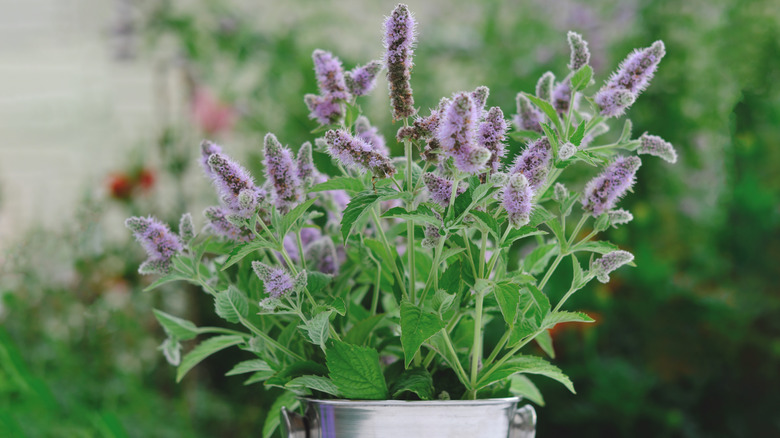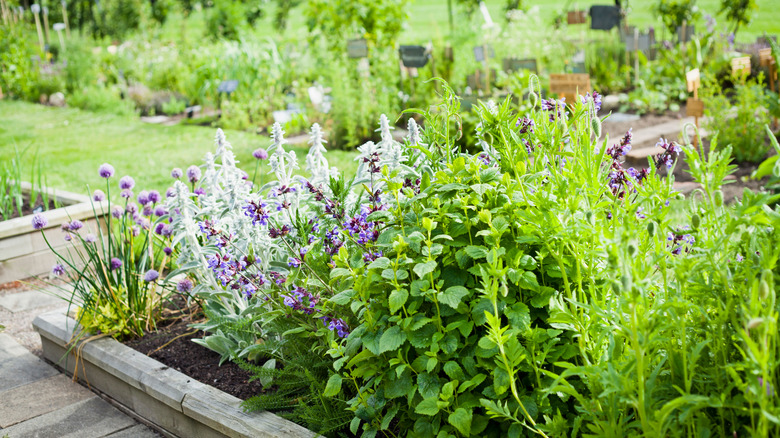As a pro gardener or even a novice with a green thumb, the last thing you want to see on your precious plants are hundreds of tiny green pests sucking the life out of the leaves. Aphids are the bane of any plant they come in contact with. These small insects can decimate your garden using just their piercing and sucking mechanism. As a solution to combat aphids, people are swearing by growing catnip in the garden to keep the pests off their property. Catnip does have chemical compounds that cause insects like aphids pain or discomfort.
Once aphids have siphoned out the plant sap from plant leaves, their victims become discolored, yellowed, and withered, and the whole plant can suffer for it by becoming stunted. Aphids are also disease vectors and can impart illnesses to your plants that will kill them even faster. If you’re in the market for a chemical-free, ultra-natural approach to warding off these pests from your fruits and veggie garden, you may be looking into using catnip as a deterrent.
What makes catnip an eligible solution to your aphid problem lies in the compound nepetalactone, which it produces for repelling pests. While this chemical whips your cat into an excited frenzy, it irritates insects. When it comes to some aphids, catnip has an interesting relationship with them. Nepetalactone happens to be the sex pheromone of aphids. Instead of attracting aphids to the plant, catnip attracts their enemies that, in turn, attack the pests.
Grow catnip as a companion plant to ward off aphids

While the catnip and aphid relationship is severely understudied, the potency of the plant against the pest has been pushed by online users. Since the research affirms that catnip does possess natural bug-repelling tendencies, as well as the pheromones responsible for reproduction in aphids, it’s safe to conclude that you’re better off using catnip to deter them organically from your edible garden.
One way you could grow catnip to deter pests is by companion planting with suitable fruits, vegetables, and herbs. Catnip’s strong phytochemicals keep a long list of pests away, not just those pesky aphids, a trait that can be harnessed by plants such as collard greens, cabbage, broccoli, tomatoes, and oregano. Another upside to using catnip as a companion plant is that its purple or white flowers attract pollinating agents such as honeybees and butterflies to your yard and help your garden.
With all this catnip around, you should also expect an influx of cats in your yard as well. If we’re being honest, who wouldn’t like that? Not only do you get a horde of purring fur friends, but their presence indirectly means that rodent pests get put in check. That sounds like another huge win for your garden. If you don’t want cats, you can place garden spikes or a short fence around the catnip plants.
Plant catnip in a pot before putting in the ground

Using catnip as a repellent for aphids is a step in the right direction for an organic solution. Catnip grows well with a lot of fruits and vegetables in your garden. However, there is a clause that comes with planting it. Catnip is an aggressive perennial that is said to grow like a weed. It’s so prolific it’s classified as an invasive plant in parts of the country.
The solution to this is to put a leash on it. Plant the catnip in a pot or container and bury it in the garden close to its companion plants. That way, the catnip doesn’t grow beyond its bounds and overtake the other veggies and fruits. All you need to do is provide it with enough full sunlight and loamy, well-drained soil to grow properly.
To successfully grow catnip plants in your garden, remember to prune the growth as frequently as possible. This will help control the catnip’s enthusiastic sprouts from wandering across the garden. Since it’s going to be in a pot or container for most of the time, you must regulate how much water goes into the soil around it. The last thing you want is for your pest repellent to experience root rot and end up dying.



